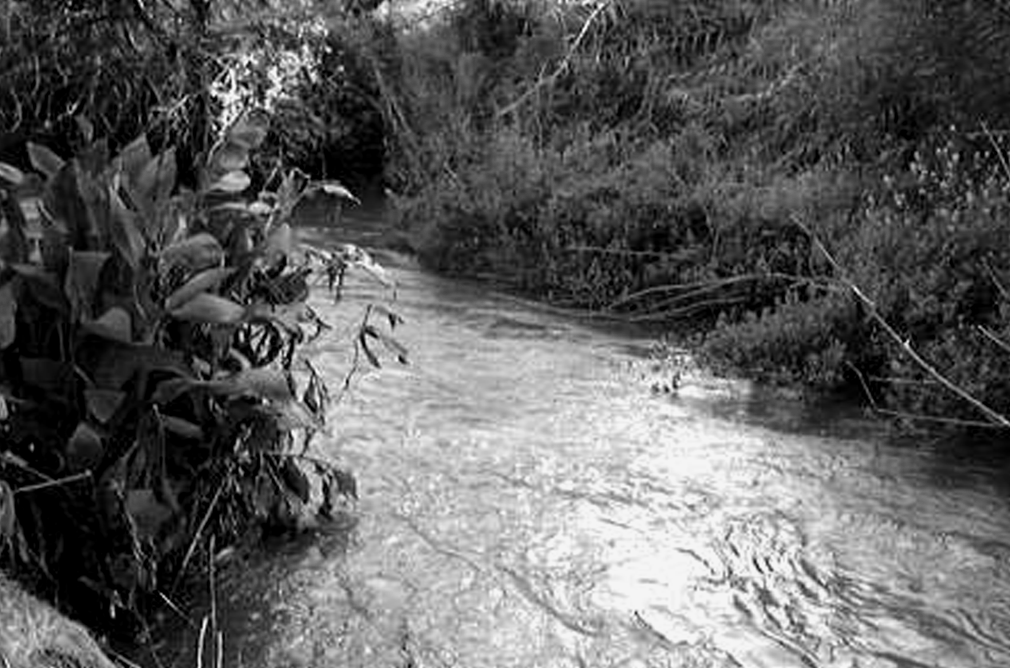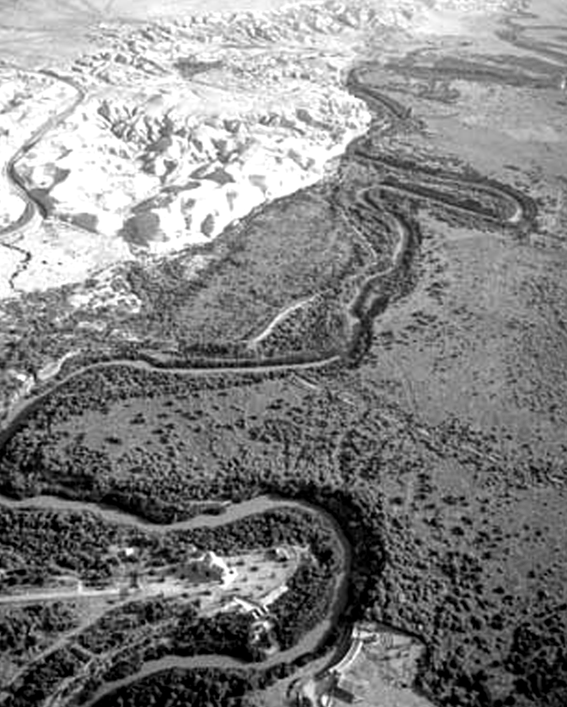The Foul Waters Will Be Sweetened
“Every thing that liveth, whieh moveth, whithersoever the rivers shall come, shall live … for they shall be healed” (Ezekiel 47:9).
The Dead Sea is one of the most prominent features of the land of Israel. It is the lowest elevation on the face of the earth, being some 1,312 feet below sea level. It is the deepest salt lake in the world, and one of the world’s saltiest bodies of water, with 33.7% salinity. It is 8.6 times more salty than the ocean. As a result of its harsh environment, animals cannot flourish. In fact, it is completely devoid of life; hence its name, “Dead Sea,” is most appropriate.
The River Jordan once poured some 1.3 billion cubic meters of water into the lake daily, yet it does not overflow, even though there is no outlet. This flow has been greatly reduced in recent times due to human intervention. 70% to 90% of the water from the Jordan River is now used for human purposes. As a result, the Dead Sea is shrinking. The shallow waters at the southern end of the lake are now dry salt flats.
In spite of the harsh conditions of the Dead Sea, God has promised that it will some day teem with life. Describing a river flowing out of the east gate of the temple to the Dead Sea, the Lord said, “These waters issue out toward the east country, and go down into the desert, and go into the sea: which being brought forth into the sea, the waters shall be healed. And it shall come to pass, that every thing that liveth, which moveth, whithersoever the rivers shall come, shall live: and there shall be a very great multitude of fish, because these waters shall come thither: for they shall be healed” (or “sweetened” as some translations have) (Ezekiel 47:8, 9, Rotherham).
Earlier in the chapter the Lord described the river in more detail. As it progressed eastward, the depth of the river increased from the ankles, to the knees, to the loins, finally into a giant river that could not be crossed. We are told that on the river banks were “very many trees” (verse 7).
This description of a river proceeding out of the temple is also alluded to in the Book of Revelation. “Then he showed me a river of the water of life, clear as crystal, coming from the throne of God and of the Lamb, in the middle of its street. 0n either side of the river was the tree of life, bearing twelve kinds of fruit, yielding its fruit every month; and the leaves of the tree were for the healing of the nations. There will no longer be any curse; and the throne of God and of the Lamb will be in it, and His bond-servants will serve Him” (Revelation 22:1-3, NAS).

Dead Sea Salt Formations

Jordan River
KINGDOM BLESSINGS
The river flowing from the temple pictures the blessings of the Kingdom which will issue forth from heaven. The river begins small, to the ankles, and then increases to a giant flow. This is a depiction of how the blessings of the Kingdom will begin to flow, slowly at first, but then increase to encompass all mankind. The trees along the river bank have amazing restorative qualities. We are told that they are “for the healing of the nations.” This is a picture of universal blessings, for all nations. It shows mankind being healed from the blight of sin and death. There will be no more Adamic curse and the trees will be life sustaining.
Jesus connected this temple class with his followers when he said that out of their bellies would flow “rivers of living water” (John 7:38, see also Zechariah 14:8, 9). The church will be used by God to dispense life giving truths, guidance, discipline, and parental love. This in turn will result in eternal life for all those who accept the terms of consecration. There will be great character growth, as demonstrated by the twelve manner of fruit produced.
The river will finally flow directly into the Dead Sea, making its foul waters sweet. What a lovely picture of the full restitution of mankind. It begins with a small flow, increases to a great river and eventually encompasses an entire lake where, in the past, life had been unknown. It will then be a place of abounding life. The Dead Sea then pictures the grave, a place where all people eventually end up. There is no consciousness or thought in the grave. There is no discussion, no joy. There is only quietness. Being the lowest elevation on earth aptly conveys the thought that death is our worst enemy. It is the lowest point any person can reach. The Dead Sea illustrates the fact that the grave is never full. No matter how many flow into it the banks never overflow.
The high salt content of the Dead Sea reminds us of the many tears that man has shed on his wayward course to death. Much of the shoreline is encrusted in the white salt that remains after evaporation. It casts a cadaverous pale impression that reminds one of leprosy, another symbol of sin and death.

Jordan River, Descending
JORDAN RIVER
But what do we see before the healing of the Dead Sea, before the temple waters restore it to life? As we look to the original source of the Dead Sea we see the River Jordan. It flows into the sea from the north. Looking even further north we see that the source of the Jordan is the majestic Mount Hermon. Its name means “Prominent,” a fitting name because it is the highest spot in Israel, being situated on its northern border. Mt. Hermon is alluded to in Psalms 133:3. There it describes the holy spirit of God descending as the “dew of Hermon” bringing life. If the dew of Hermon is the holy spirit, then the mountain must represent God himself.
The natural blessings of Mt. Hermon are in the melting snow and springs of water that descend from its slopes. When these unite they form the beautiful and tranquil River Jordan. If Mount Hermon pictures God and the dew his holy spirit, then the River Jordan may also be symbolic. The name Jordan means “Descender.” It is a fitting name, for the Jordan descends from the highest point in Israel to the lowest point on earth.
As Mount Hermon pictures God, and the Dead Sea represents mankind in death, it is reasonable to assume that the downward course of the Jordan River illustrates the descent of mankind, from life and health in the perfection of Eden, to his current condition of death.
There are some interesting aspects of the Jordan’s descent that we notice. First we see that almost 3/4 of the river lies below sea level. There are also two lakes that exist along its path. The first, Lake Huleh, is near sea level. In Biblical times it was called “Merom,” meaning “Elevated.” This may well picture the condition of mankind, as represented in father Adam. In his perfection, pictured at sea level, he was elevated, being given dominion over “every living thing that moved upon the face of the earth” (Genesis 1:28).
After leaving Huleh, the Jordan plunges rapidly below sea level and the waters become very muddy. These two elements picture the rapid descent of man into sinful thoughts and practices as mentioned in Genesis 6:5, “And G0d saw that the wickedness of man was great in the earth, and that every imagination of the thoughts of his heart was only evil continually.”
Jordan’s rapid downward path is then stopped briefly at the next lake, the Sea of Galilee. Though the waters of Jordan enter Galilee very muddy, the lake has a cleansing affect, and the waters leaving Galilee are clear. As Galilee slowed the descent of the Jordan, so we find that the Flood of Noah’s time also slowed the downward course of mankind. It had, in essence, a cleansing affect on our race. The word Galilee means “Circle” and may bolster the application here. God used a rainbow to confirm his covenant with Noah never to send another flood. A rainbow is actually a full circle. We rarely observe the full rainbow circle because the lower portion is blocked by the earth. A full rainbow can be seen by someone standing on a mountain, or in an airplane.
After leaving the Sea of Galilee, the River Jordan takes a most winding and crooked path. Mankind’s descent after the flood continued a crooked course of sin and depravity on its way to the Dead Sea.
And so, in the very topography of Israel, we see an illustration of God’s plan. It begins at God’s holy mount, as the source of blessing and life. It initially blesses man for a brief time in a garden of perfection, pictured by Lake Huleh. It then proceeds to the sinful descent of man below sea level, stopped briefly at the Sea of Galilee. We see there a cleansing of the race through the Noachian Flood. The descent finally ends in a sea of death. From there God promises to restore and uplift our race in the cleansing waters that issue forth from his very temple.
GIVEN TO SALT
There is one final feature of this picture that needs to be examined. After the healing of the Dead Sea we are told, “But the miry places thereof and the marshes thereof shall not be healed; they shall be given to salt” (Ezekiel 47:11, Rotherham).
Marshes and miry places refer to stagnant waters. These unhealed waters aptly represent those of mankind who, after being raised from the dead, will consistently refuse to make any progress, even after every possible assistance is given to them by Jesus and the Church. Not all will accept the conditions of the Kingdom (see Isaiah 65:20, Revelation 20:8). Not all hearts will become devoted to truth and righteousness. Not all people will be willing to consecrate their lives to God. These will not receive eternal life, but will be cut off in second death, an unconscious condition from which there will be no resurrection. These will be “given to salt.”
As the last of mankind reach perfection God’s Divine Plan will reach its fruition and the once foul waters that we have all tasted of will be fully healed and made sweet. Abundant life will be lived and loved by all.
“And the Spirit and the bride say, Come. And let him that heareth say, Come. And let him that is athirst come. And whosoever will, let him take the water of life freely” (Revelation 22:17, Rotherham).
– Adapted from a discourse by Bro. George Tabac
